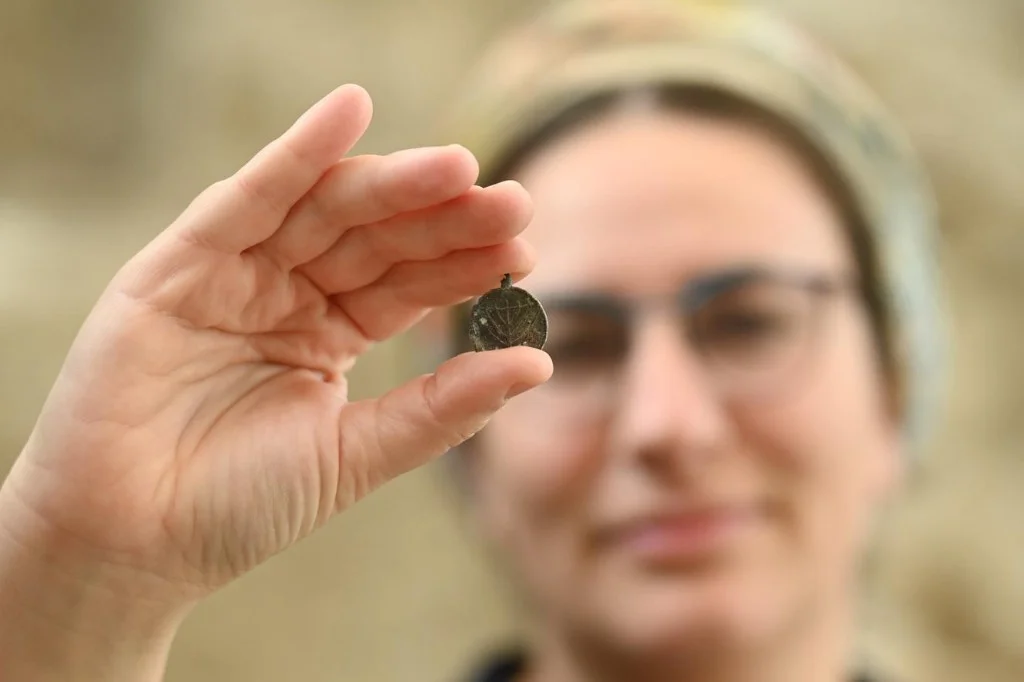Jerusalem, 20 August, 2025 (TPS-IL) — The world’s first known human hybrid has been identified in Israel, where archaeologists say a 140,000-year-old skeleton of a child provides the earliest evidence of interbreeding between Homo sapiens and Neanderthals, Israeli and French scientists announced on Tuesday.
The fossil, unearthed decades ago in the Skhul Cave on Mount Carmel, pushes back their biological and social ties by more than 100,000 years and establishes the Levant as the cradle of humanity’s first mixed population.
“This discovery reveals the world’s earliest known human fossil showing morphological traits of both of these human groups, which until recently were considered two separate human species,” the research team said. “The current study shows that the five-year-old child’s skeleton is the result of continuous genetic infiltration from the local—and older—Neanderthal population into the Homo sapiens population.”
Neanderthals were a shorter, stronger human group that evolved in Europe, while Homo sapiens, who emerged in Africa, were taller, leaner, and more adaptable. Neanderthals had heavy brows, large noses, and no chin, while modern humans have rounder skulls, higher foreheads, and distinct chins. The two groups eventually met and interbred. Although Neanderthals disappeared about 40,000 years ago, traces of their DNA still live on in humankind.
The study was led by Prof. Israel Hershkovitz of Tel Aviv University and Anne Dambricourt-Malassé of the French National Centre for Scientific Research. Their findings were published in the peer-reviewed journal l’Anthropologie.
“Genetic studies over the past decade have shown that these two groups exchanged genes,” Hershkovitz said. “Even today, 40,000 years after the last Neanderthals disappeared, part of our genome—2 to 6 percent—is of Neanderthal origin. But these gene exchanges took place much later, between 60,000 and 40,000 years ago. Here, we are dealing with a human fossil that is 140,000 years old.”
The child’s skull had the curved vault typical of Homo sapiens, but also Neanderthal traits, including the blood supply system, lower jaw, and inner ear. “The fossil we studied is the earliest known physical evidence of mating between Neanderthals and Homo sapiens,” Hershkovitz said.
For years, scholars assumed Neanderthals evolved in Europe and arrived in the Levant only around 70,000 years ago. But fossils found at Nesher Ramla in 2021 showed Neanderthals lived in Israel as early as 400,000 years ago. The Skhul child confirms that these populations did not just meet Homo sapiens migrating from Africa—they interbred, creating the first evidence of hybrid communities.
The team reached their conclusions after scanning the fossil with micro-CT technology at Tel Aviv University’s Shmunis Family Anthropology Institute. The scans produced a 3D model of the skull and jaw and reconstructed the blood vessel system inside the head, allowing detailed comparison with both human and Neanderthal anatomy.
Until now, the earliest known hybrid was the “Lapedo Valley Child” found in Portugal in 1998, but that skeleton dates back only 28,000 years. The Skhul child predates it by more than 100,000 years, fundamentally reshaping the timeline of human interaction.
Traditionally, the Skhul and nearby Qafzeh cave fossils were all classified as early Homo sapiens. The new study shows at least some represent a blend of populations. Dambricourt-Malassé said the finding proves that “biological and social relations between these groups were taking place far earlier than previously believed.”



























